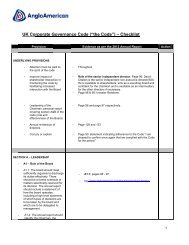pdf [ 1.1MB ] - Anglo American
pdf [ 1.1MB ] - Anglo American
pdf [ 1.1MB ] - Anglo American
You also want an ePaper? Increase the reach of your titles
YUMPU automatically turns print PDFs into web optimized ePapers that Google loves.
Leonard Mkhwebane separateswaste at Isibonelo collierybefore it is taken away forrecycling or disposal.Waste management<strong>Anglo</strong> Coal South Africa distinguishes between twotypes of waste in the environmental managementprogrammes, namely non-mineral and mining waste.Non-mineral waste> There are four generalwaste streams at collieries:oooopaper, which is recycled and sold to localvendors;hazardous (including medical) waste, which isdisposed of by contractors to licensedhazardous waste sites;scrap metal, which most of the collieries sortand sell to recyclers; anddomestic waste, which is disposed of bycontractors to the municipal landfill sites.There is no uniform procedure for reporting onnon-mineral waste volumes within the division. Thisis a shortfall that has been identified and will beaddressed during 2006 (see targets on page 9).Mining waste> The philosophy behind themanagement of mining waste is the commitment tothe responsible and efficient abstraction of resources.This commitment drives the division’s endeavoursto increasingly reduce, reuse and recycle theavailable materials on site. To do this, <strong>Anglo</strong> CoalSouth Africa is employing innovative technologiesand practical solutions.One such technology is the beneficiation of ultrafine coal. A fine coal flotation plant was commissionedat Greenside colliery, adding approximately 3% tothe washed coal yield and a corresponding reductionin fine coal waste. It has been decided to proceedwith a similar plant at Goedehoop colliery. Thisplant is expected to have a yield similar benefit andproduce an additional 300,000 tonnes per annum.Construction is underway and the plant is scheduledfor commissioning at the end of 2006.With the greater demand for power in SouthAfrica and Eskom’s ability to use lower grades ofcoal, increasing volumes of lower grade coal arebeing supplied to Eskom for power generation. Thishas resulted in better resource utilisation and anincrease in the life of mine at certain collieries.Discard coal, often disposed of in coal slurry andspoil piles, could be reused in a number of ways. Inresearch tests, the coal has been ‘dissolved’ usingfungal microbes. This process creates several byproducts,which could be used for:ooooooclean liquid fuel;methane from the microbial digestion of coal;high value chemicals and organic compounds;self-establishing dump coverage, topsoilrehabilitation and soil conditioning;low-cost carbon source for biological minewater treatment and groundwater remediation;andethanol production.Further research into this particularbiotechnology is under way.31


![pdf [ 1.1MB ] - Anglo American](https://img.yumpu.com/49057963/33/500x640/pdf-11mb-anglo-american.jpg)
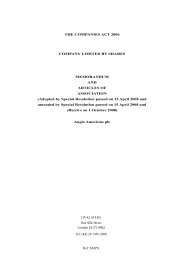
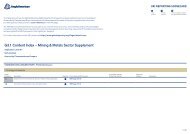
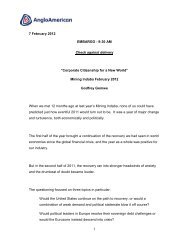
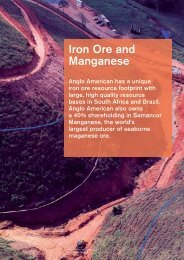
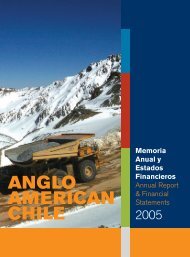
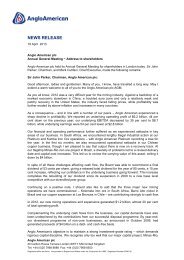
![English PDF [ 189KB ] - Anglo American](https://img.yumpu.com/50470814/1/184x260/english-pdf-189kb-anglo-american.jpg?quality=85)
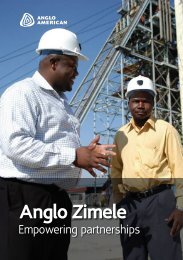

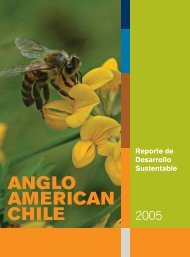

![pdf [ 595KB ] - Anglo American](https://img.yumpu.com/49420483/1/184x260/pdf-595kb-anglo-american.jpg?quality=85)
